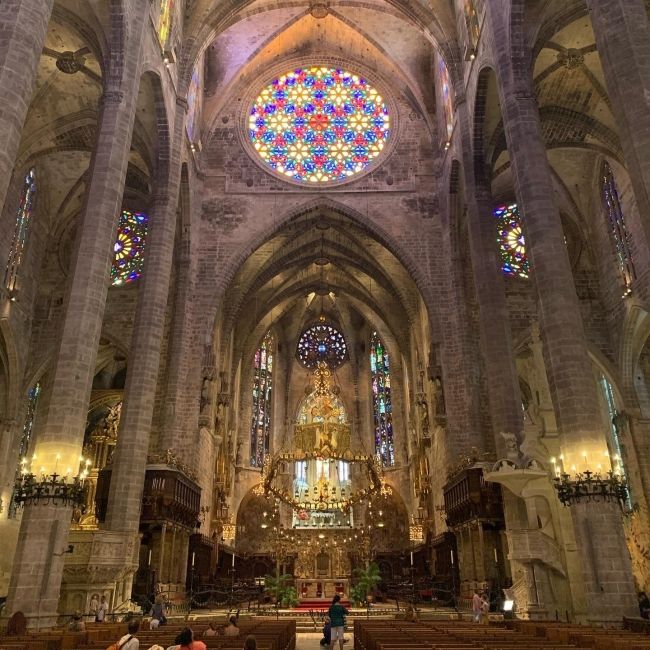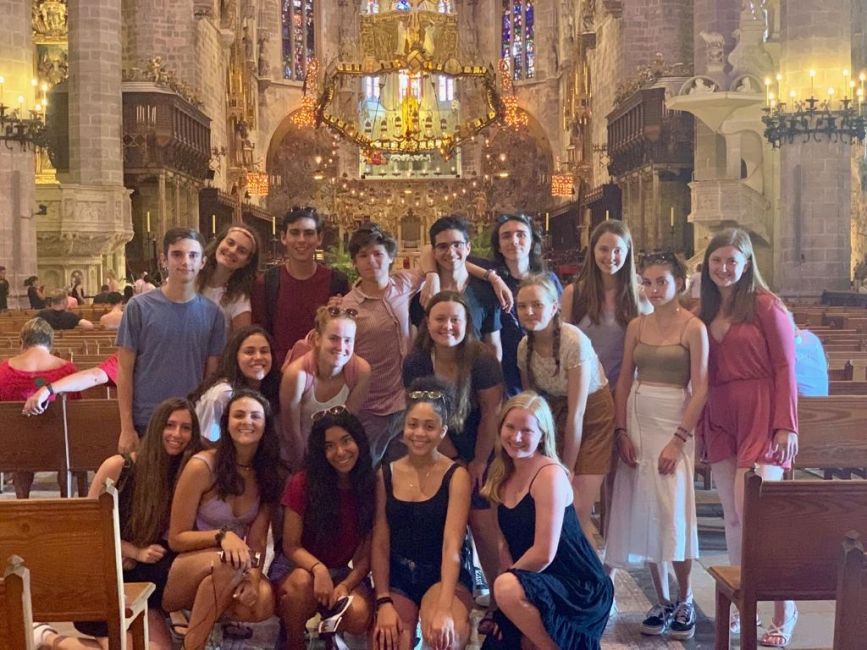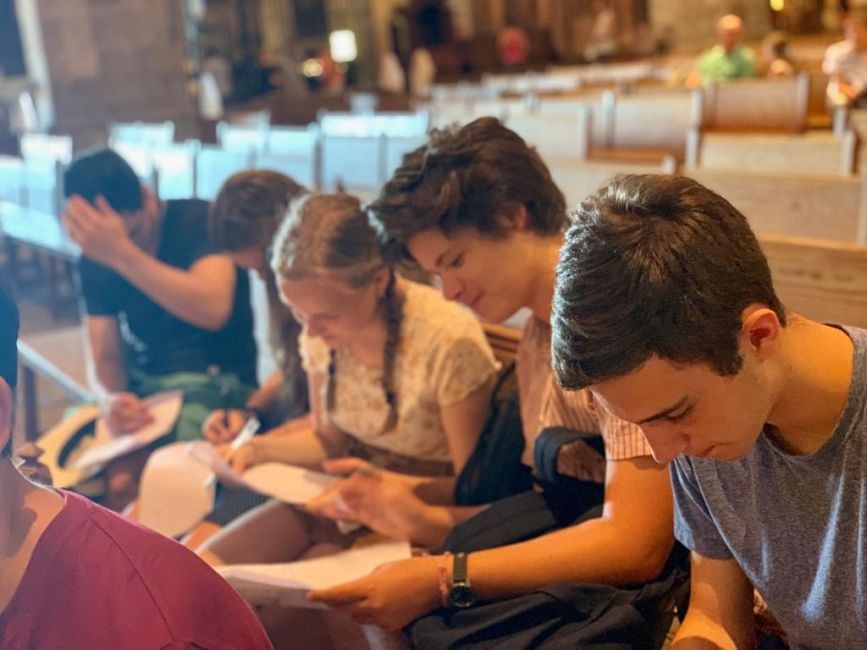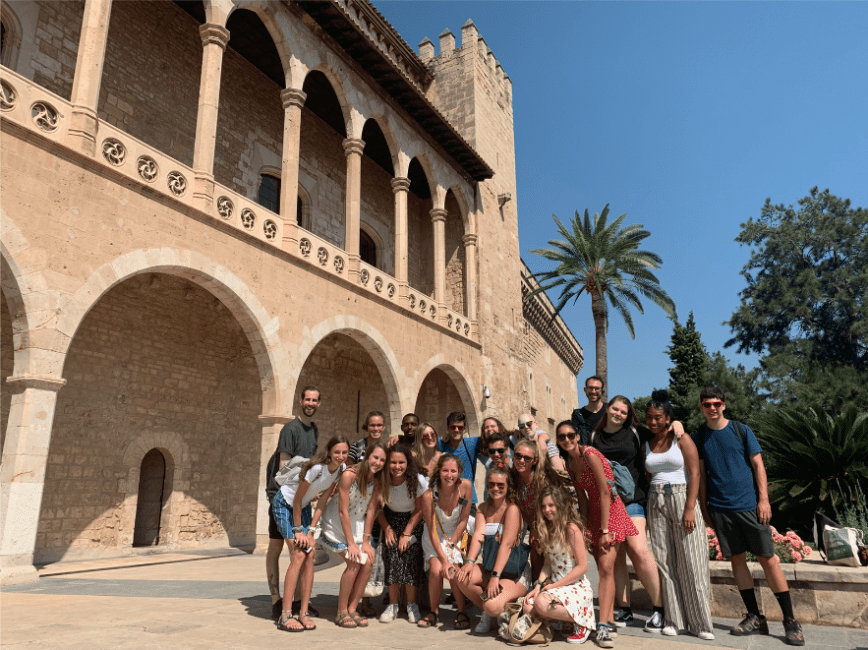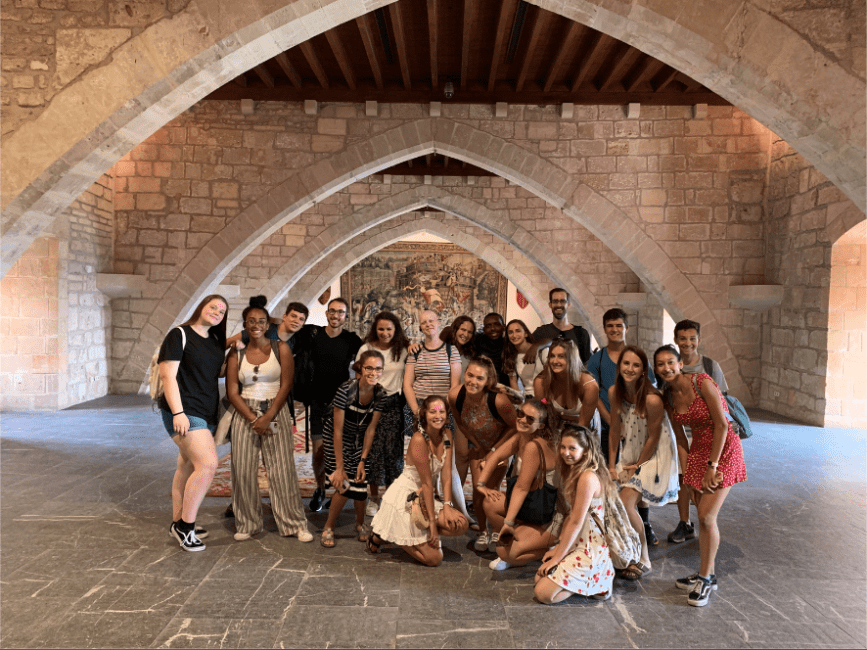Almudaina Palace and Cathedral of Palma
Students visited two of Palma’s most important cultural sites: The Almudaina Palace and the Cathedral of Palma.
The Almudaina Palace
Originally a moorish palace built in the 1200s, complete with gorgeous baths and majestic gardens, the Almudaina is one of several royal palaces across Spain. Today, it is the summer residence for the Spanish Royal Family. Students explored many of its numerous chambers decorated with thousand-year old tapestries, historic paintings, and views of the Mediterranean. The surrounding border wall used to be where the sea met land, and ships would be stationed right at its front gates.
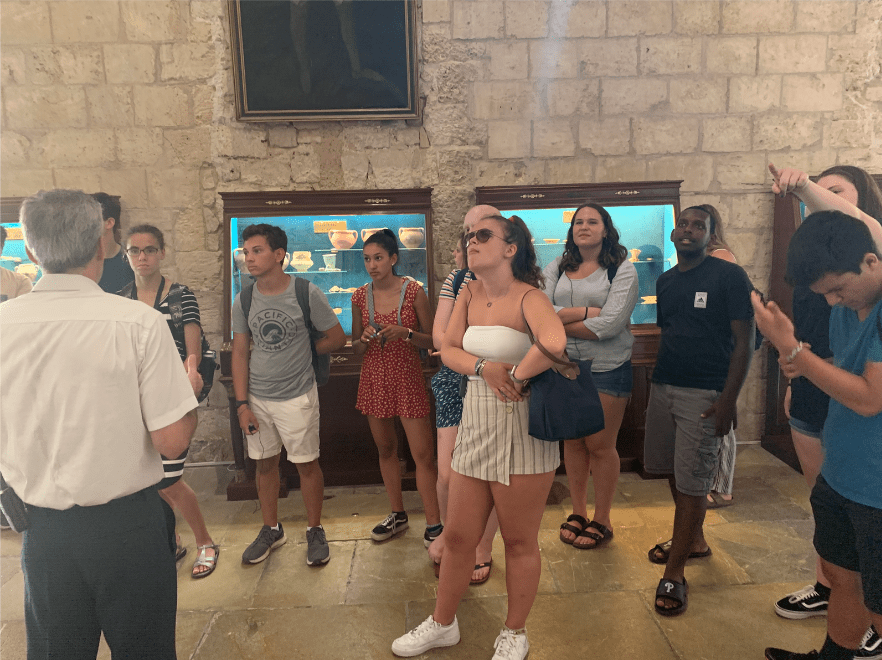
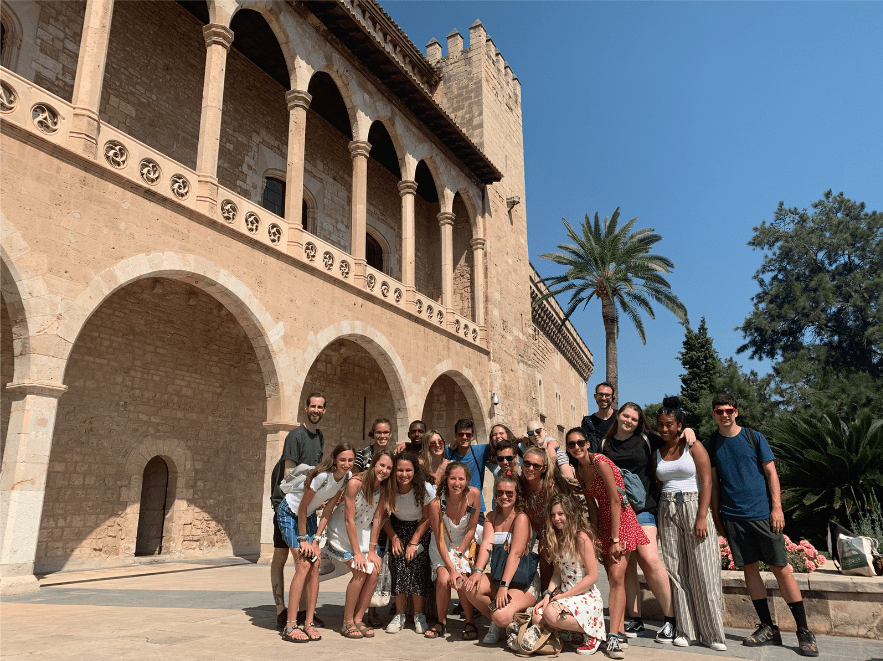
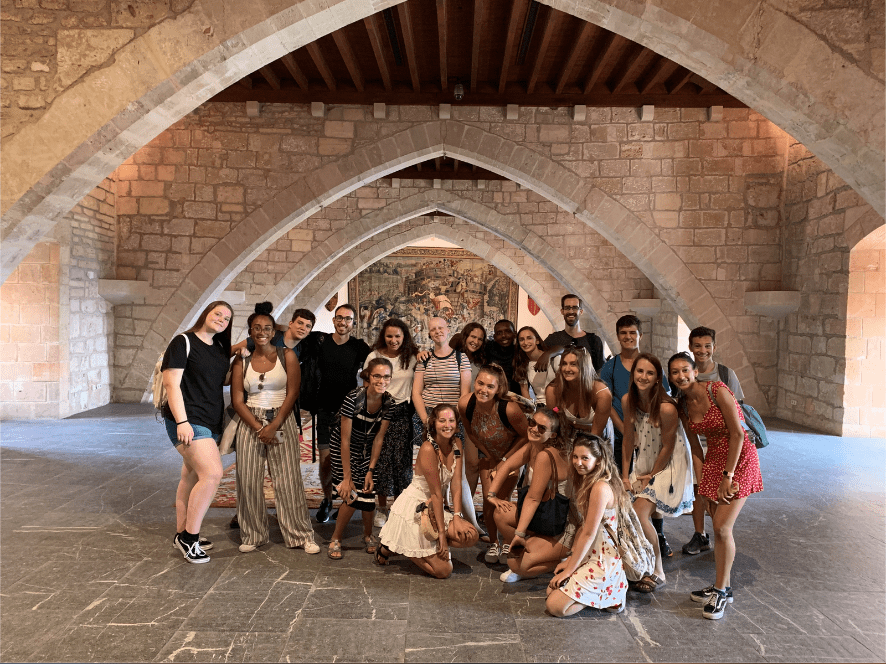
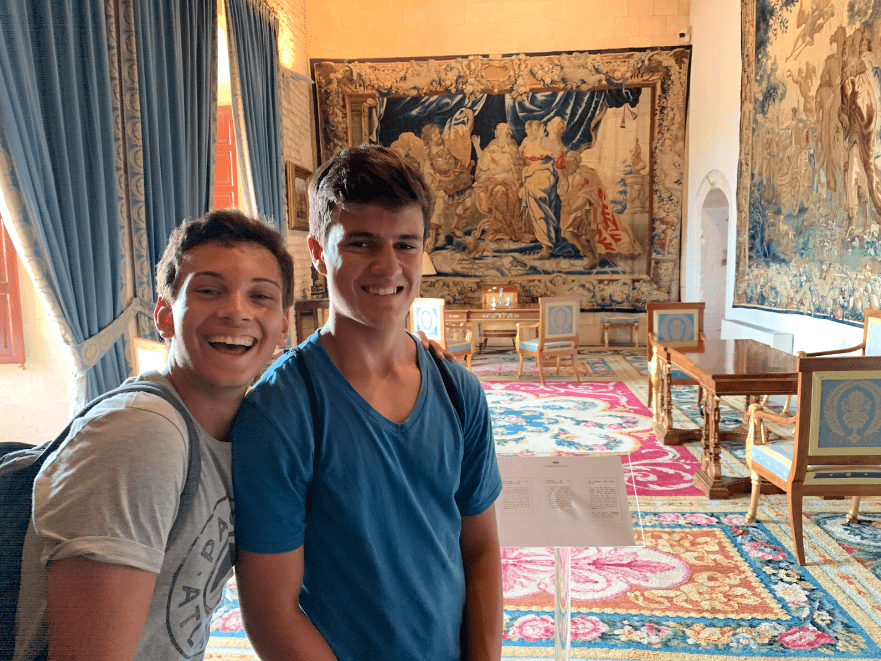
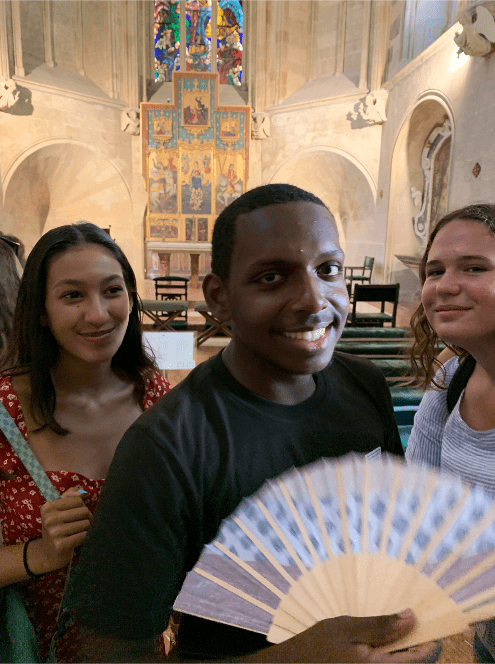
The Cathedral of Palma
In the 1200s, King Jaime I and his crew boarded ships to cross the Mediterranean from mainland Spain to reconquer Mallorca from the Moors (North African Muslims). As they traversed the sea, a terrible storm ripped through their ranks and the king began to fear his ship would go down. Following his Catholic faith, he prayed to Santa María and promised her that if he made it safely to his destination, he would erect a cathedral in her honor. Lo and behold, here we are today in one of the most stunning Gothic Cathedrals in the world.
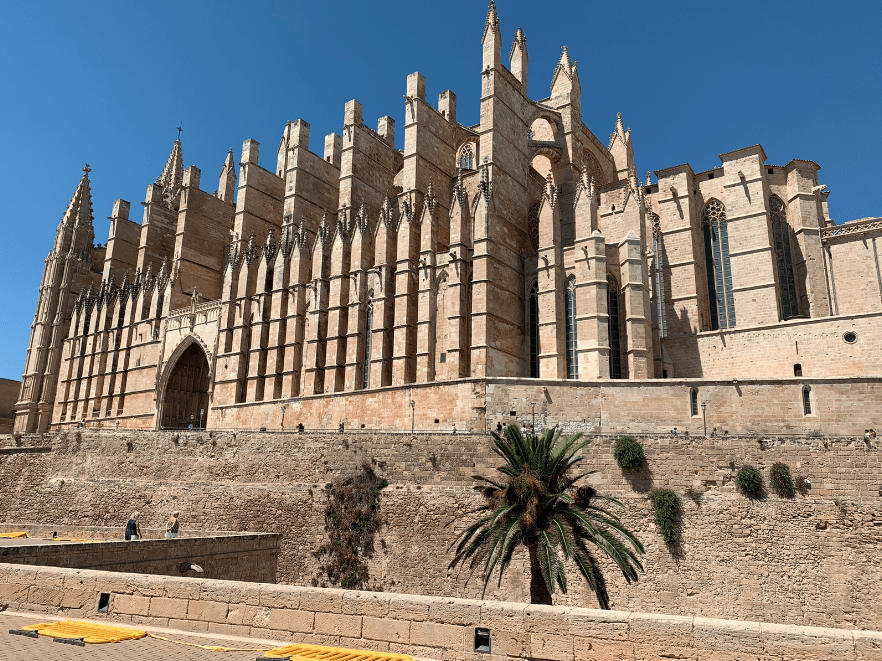
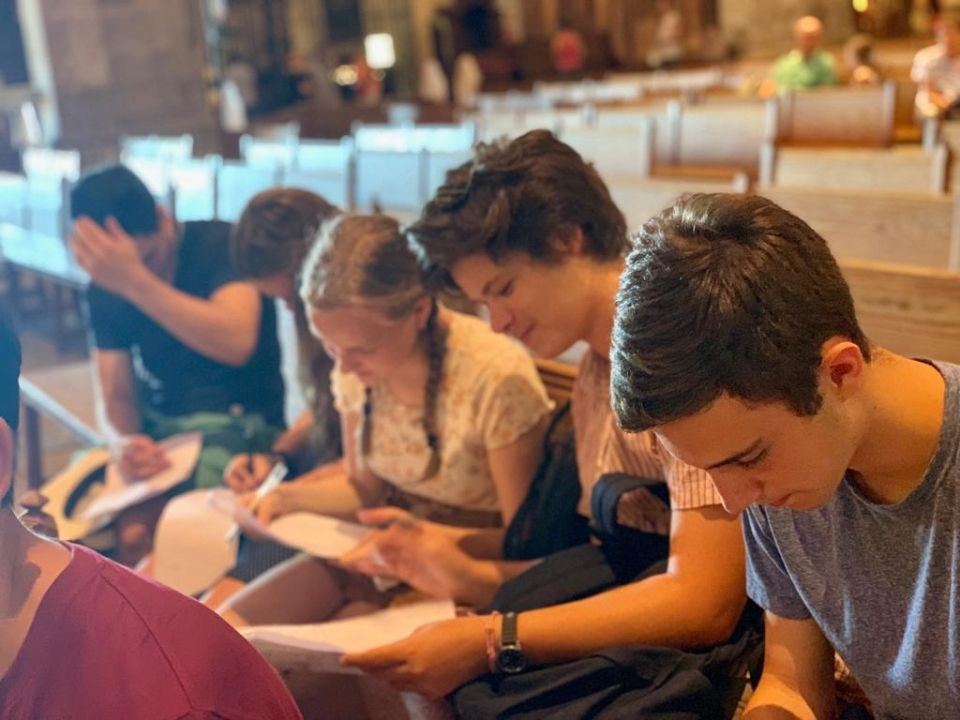
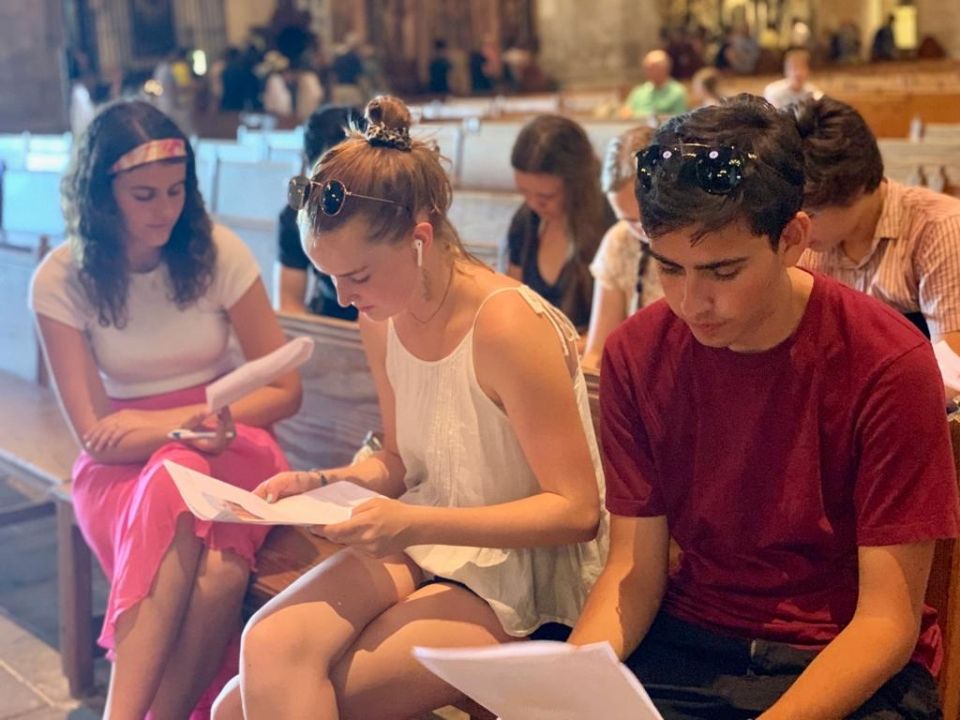
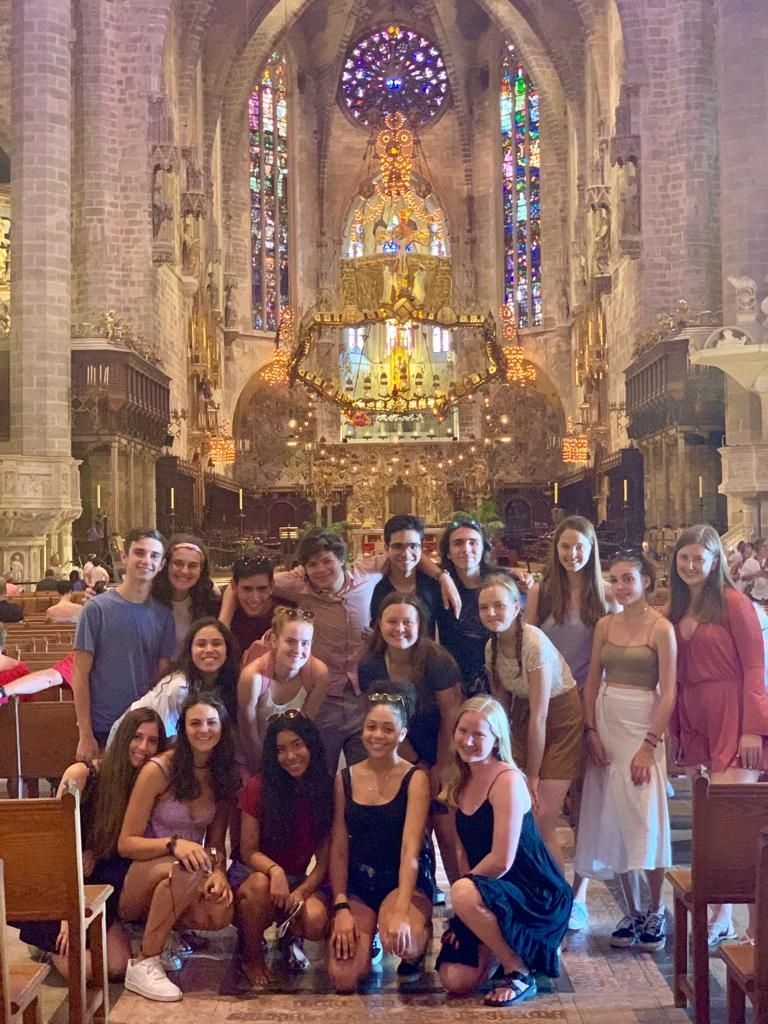
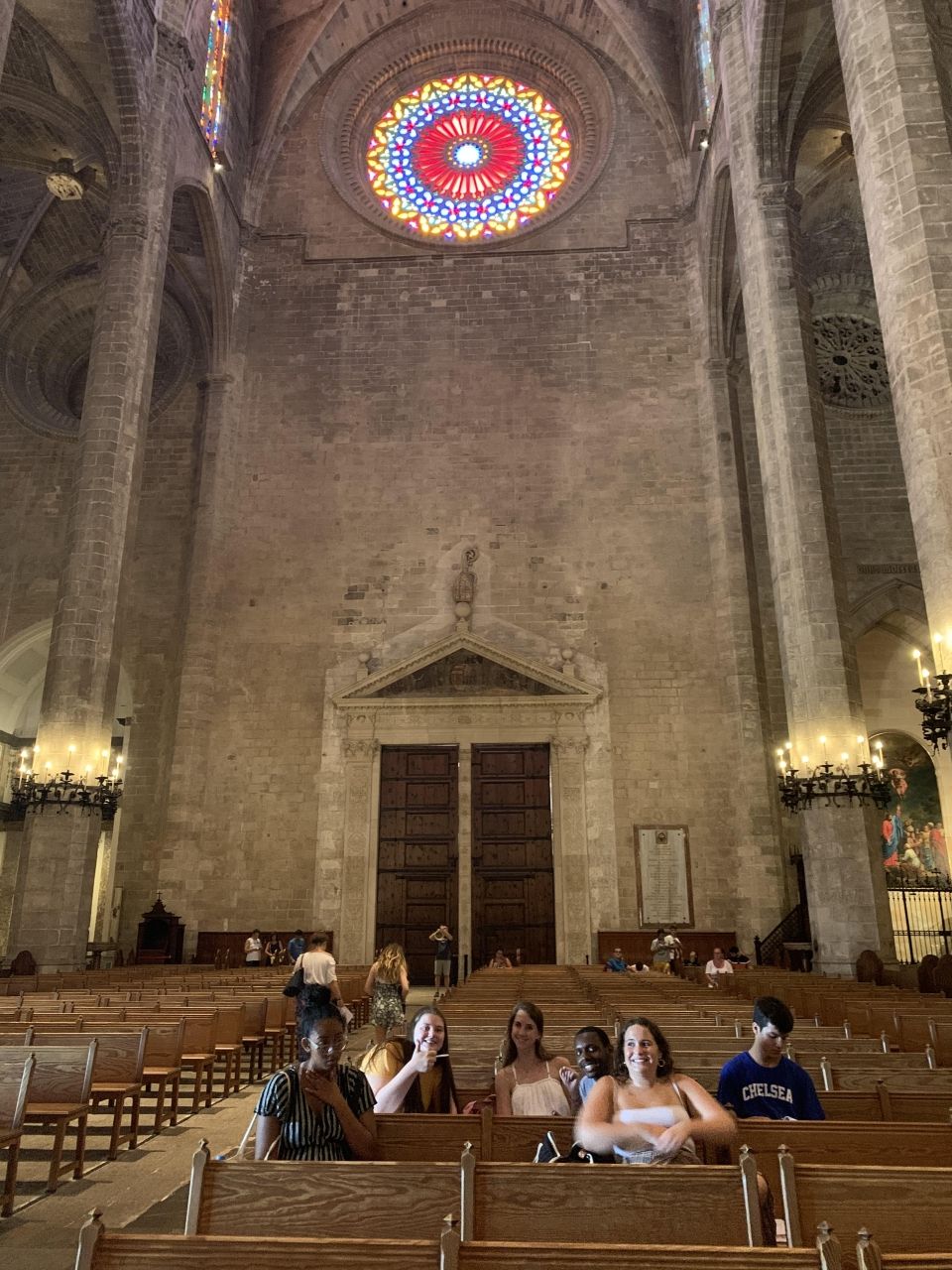
Here are the highlights of this wonderful monument:
1. It is home to the largest rosette (circular window) of a gothic cathedral in the world.
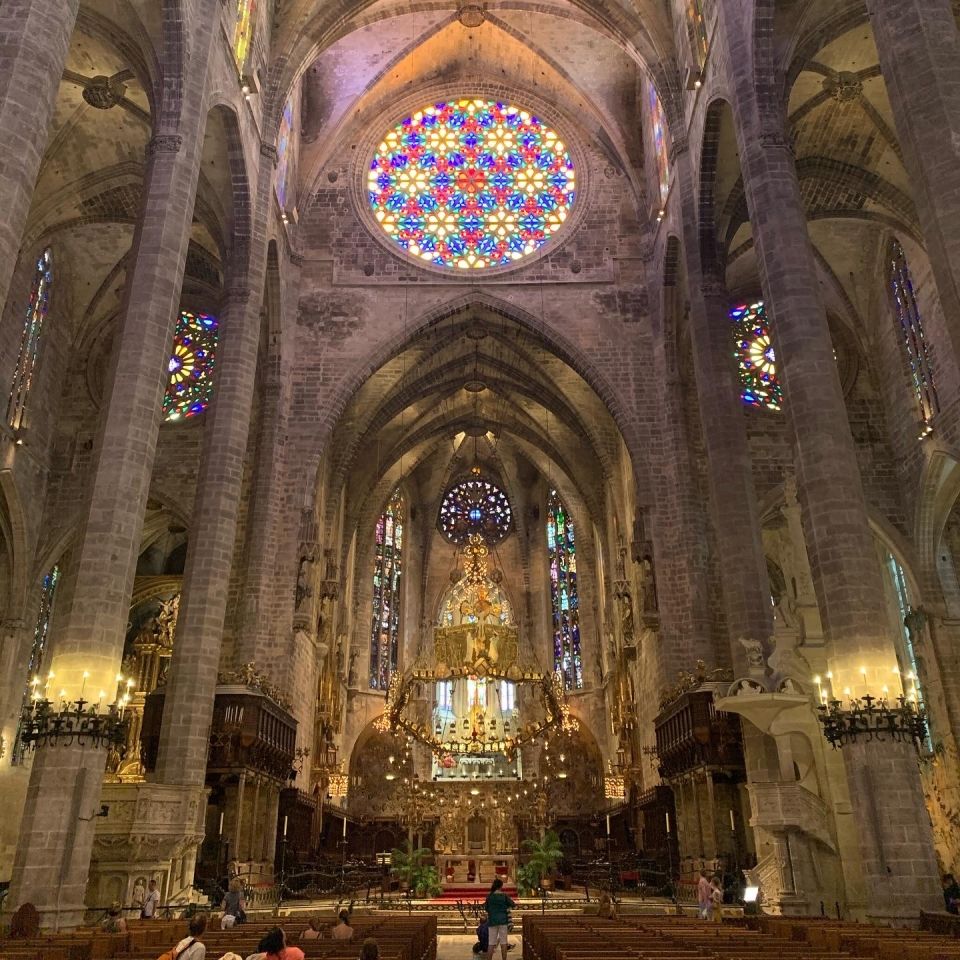
2. Twice a year, the sun hits the rosette so perfectly, that it’s stained glass windows reflect their colorful light on the opposite wall, forming a figure eight shape. This is truly a one-of-a-kind experience.
3. The altar piece was designed by Antoni Gaudí, a famous Catalan architect who designed several notable monuments in Barcelona, including La Sagrada Familia.
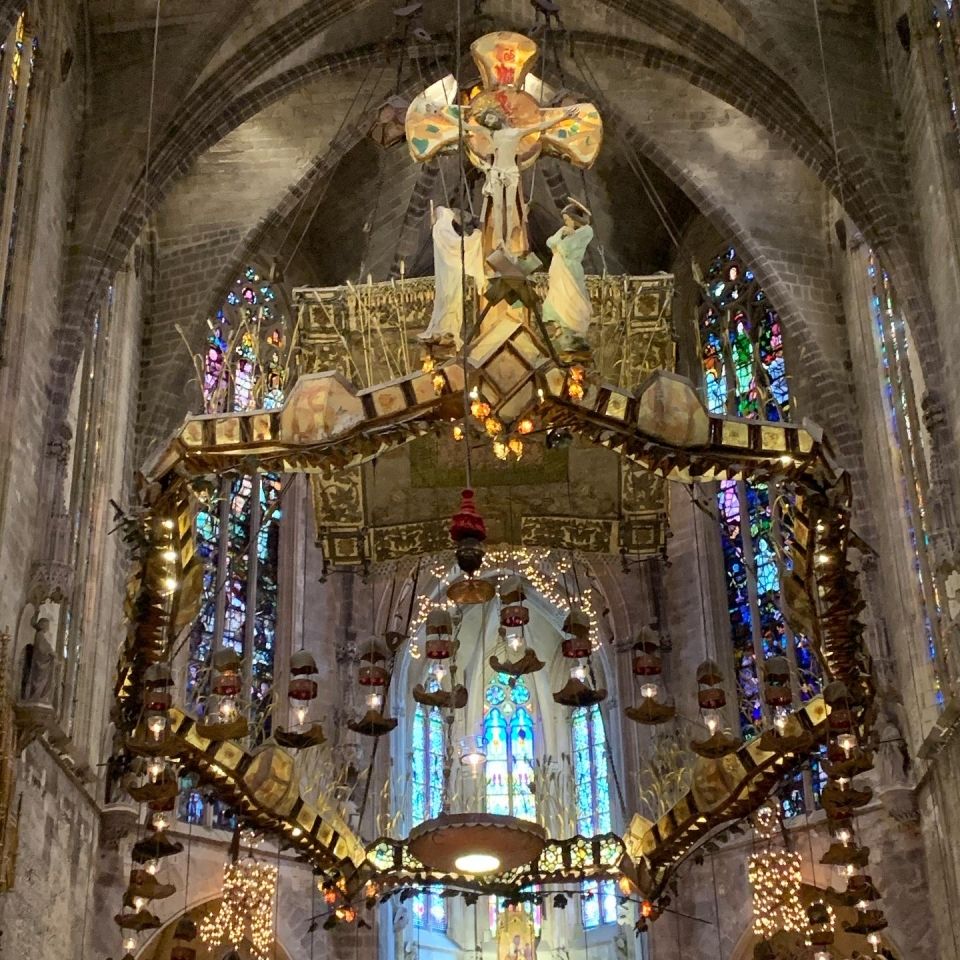
4. In the far corner of the church, you will find a ceramic sculpture by famed Mallorcan artist Miquel Barceló. Visitors relish in the opportunity to explore more of this notable piece of art.
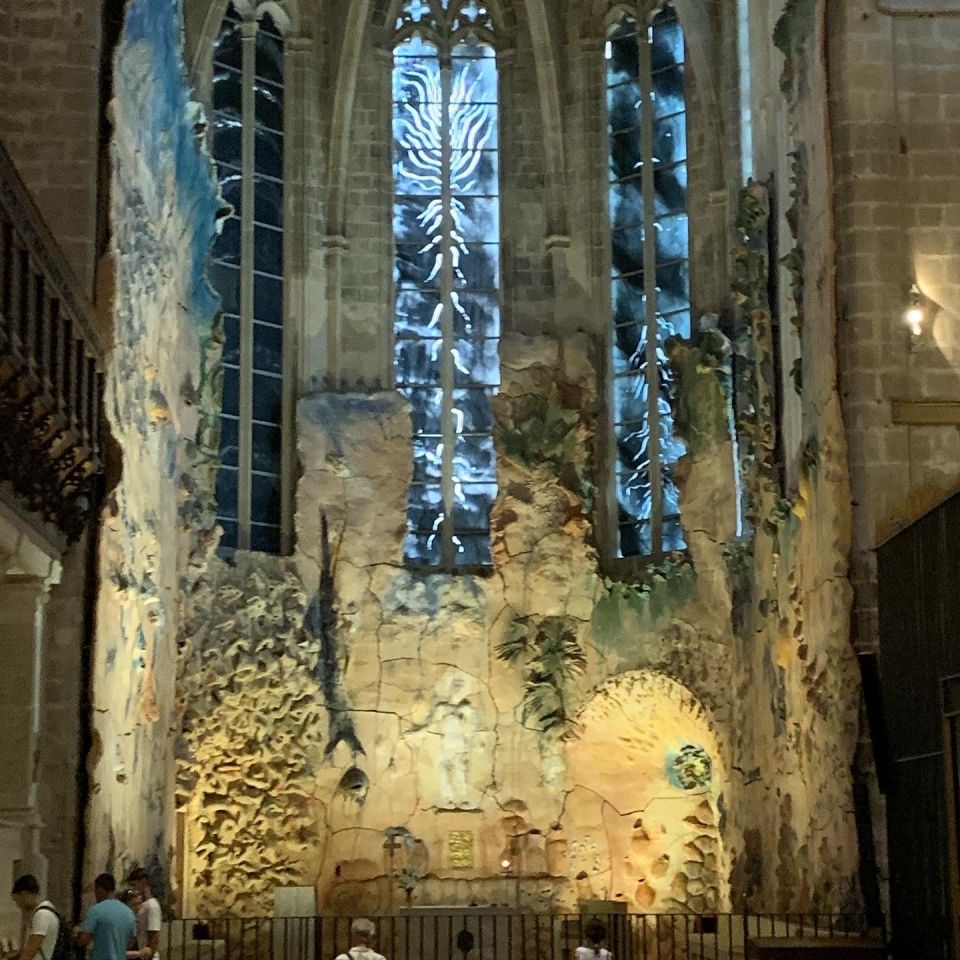
Related Posts
Scavenging Madrid
As session two comes to a close and the students are feeling confident about their Spanish-speaking abilities and navigation skills, we sent them out on a scavenger hunt (Gymkhana) throughout... keep reading
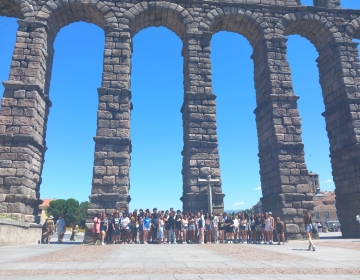
A Weekend Excursion in Segovia
During our last full weekend in Spain, we got the opportunity to spend some quality time with our friends exploring a new city: Segovia! After leaving early Saturday morning on... keep reading

